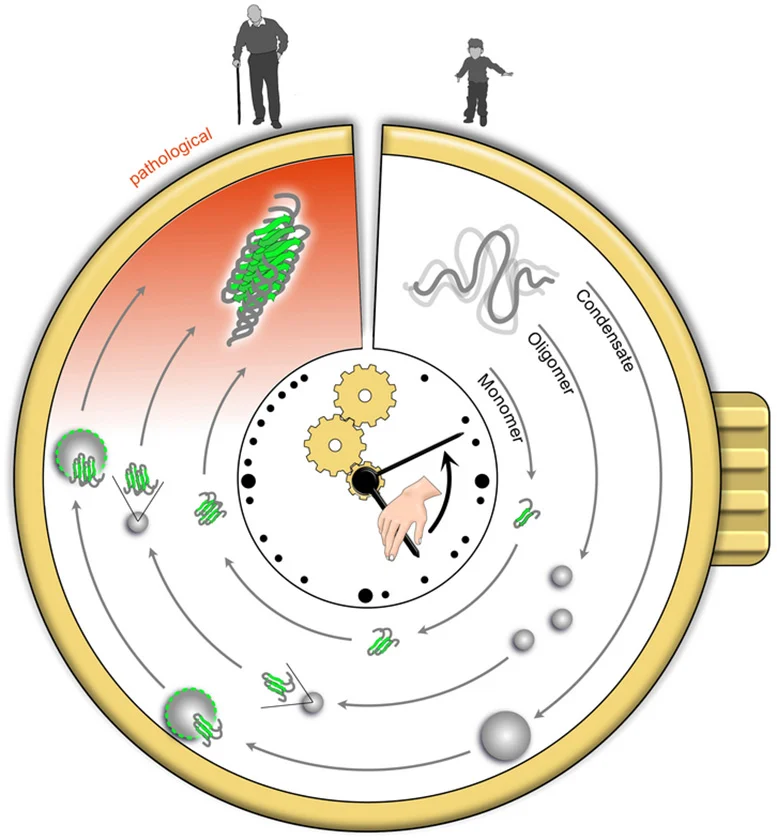With age, so goes the body, bearing a million physiological changes; probably the most important of them is the accrual of protein aggregates. These aggregates, which are formed by misfolded or otherwise damaged proteins clumping together, have become a point of interest for investigation since they can define a group of age-related diseases. Elucidating mechanisms of their generation and impacts on health may really turn around our approach toward aging and the management of age-associated diseases.
Understanding Protein Aggregates
Proteins are biologically important molecules in organisms, performing the most diverse kinds of life-sustaining functions. These are carefully folded by the cell into a unique three-dimensional shape, which enables them to execute their functions. However, such folding is intricate and sensitive, and sometimes proteins misfold due to genetic mutations, environmental factors, or just as an outcome of aging itself. This makes very many of these misfolded proteins often unstable and prone to aggregation into insoluble aggregates by formation of clumps. These protein aggregates can accumulate both inside and outside cells, perturbing normal cellular processes and leading to cellular toxicity. Indeed, the cell has developed mechanisms aimed at recognizing and degrading miss-folded proteins, such as chaperone proteins and the ubiquitin-proteasome system. Nevertheless, these systems can become saturated or their activities can become less efficient with age and thus promote accumulation of protein aggregates in tissues and organs.
Role of Protein Aggregates in Age-Related Diseases
Over the past few decades, research has implicated aggregation of proteins in a variety of age-related diseases, specifically neurodegenerative disorders. Diseases such as Alzheimer’s disease, Parkinson’s disease, Huntington’s disease, and amyotrophic lateral sclerosis (ALS) are linked to the accumulation of specific proteins that aggregate in the brain or nervous system. For example, in Alzheimer’s disease, there are beta-amyloid plaques and tau tangles that have formed over time in the brain and contribute to neuronal dysfunction with consequent cognitive decline. In Parkinson’s disease, aggregates of alpha-synuclein protein are found within neurons, setting the course for progressively worsening motor control. Frequently, the presence of these protein aggregates correlates with biochemical events that finally result in neuronal death and the clinical manifestation of the illness.

Can Protein Aggregates Predict Disease Onset?
One of the interesting questions in aging research concerns whether protein aggregates might provide early predictive biomarkers of disease onset. Some research has demonstrated that specific protein aggregates in some tissues or fluids already appear years or even decades before actual clinical expression of the disease. For instance, beta-amyloid plaques were found in the brains of people many years before showing symptoms of Alzheimer’s. Next-generation imaging techniques–positron emission tomography scans and cerebrospinal fluid analysis–are currently under development and lead to more precise detection and quantification of protein aggregates. Particular biomarkers against specific protein aggregates, like beta-amyloid and tau for Alzheimer’s disease, have been found and are currently being utilized in clinical trials and research studies as a means of tracking disease progression and assessing possible treatments.
Implications for the Prevention and Treatment of Diseases
Thus, the identification of protein aggregates as potential biomarkers gives rise to high hopes for prevention and treatment strategies against these diseases, especially neurodegenerative ones. Significant early detection of protein aggregates would mean timely intervention to slow down or even bring the progression of diseases to an end before irreparable damage to neurons and other tissues is wrought. Research investigators have recently had a strong interest in exploring therapeutic strategies that attack protein aggregation pathways, such as pharmacological agents inhibiting the formation of protein aggregates, enhancing the cellular clearance of these aggregates, or stabilizing protein folding to prevent aggregation. Clinical trials underway will test whether such therapies will bend the arc of progressive disease and make a meaningful difference for patients.
Future Directions in Research
Long-term research goals in this field include increasing our understanding of the molecular mechanisms in protein aggregation associated with aging and diseases, genetics and environmental factors that impact protein folding and aggregation, and the development of novel techniques for imaging and early detection biomarkers. Such progress in realization will require collaborative efforts at a number of levels, from molecular biology and genetics through neuroscience to clinical medicine. Understanding protein aggregates better may indicate the way toward more effective strategies for the promotion of healthy aging and combating age-related diseases.
Challenges and Opportunities
While much has been learned, protein aggregates and their interactions with the processes of aging and age-related diseases remain poses to several challenges. First and foremost among these are the ways in which protein aggregation processes are inherently complex and often considerably different depending on the type of protein concerned, its cellular environment, and other exogenous factors. Mechanism-specific therapeutic strategies to intervene in these processes without unintended consequences will require equally sophisticated insights into the underlying biology. Moreover, the multifactoriality of aging-related diseases suggests that protein aggregates are likely to be just one tile in a mosaic. Genetic predisposition, environmental exposures, life habits, and immune functions all play important roles in determining an individual’s risk of developing these diseases. Future investigations must begin to incorporate these factors into more comprehensive models of disease pathogenesis and progression.
Ethical Considerations
Research into protein aggregates also leads to many ethical issues. These include informed consent for genetic testing or biomarker analysis, issues of equal access to diagnostic tools and treatment, and stigmatization based on genetic risk profiling. It will become urgent and important that scientific advances are ethical in a social sense if a translation of research results into clinical practice and public health policy is to be achieved.
Up-and-Coming Technologies and Tools.
It is by the advancing technologies that we are able to learn more about protein aggregates and their effects on aging and diseases. High-resolution images from cryo-electron microscopy and atomic force microscopy can be used now to permit visualization of protein structure in great detail. That will provide insights into aggregate formation processes and interactions within cells. Such tools help to identify possible targets for therapeutic interventions and give aid in developing more accurate diagnostic methods. Furthermore, with the arrival of AI and machine learning, a sea change has occurred in analysis associated with protein aggregation through complicated biological data. Computation techniques can project into heaps of genetic, clinical, and imaging data to come up with patterns and correlations that would otherwise pass unbeknownst to the naked eye. By integrating AI-driven algorithms with experimental research, novel biomarkers and therapeutic strategies may be more easily and rapidly identified for attenuating protein aggregate impairment that underlies both aging and disease. In addition, policies that place value in investment in research in aging and healthcare infrastructure pave the way for innovative solutions to tackle the challenges caused by protein aggregates in an elderly population.
Conclusion
Proteins aggregates would, therefore, be a promising field of research in aging and age-accompanying diseases only if they were able to give insights into mechanisms underlying neurodegenerative and other age-related conditions. It is with a view to knowing how and why these aggregates form and employing tools for their detection at an early stage that prediction, prevention, and effective treatment of age-related diseases may become possible one day.

